Links to recordings from this day of the user meeting are at the bottom of this post.
We were welcomed to the 2nd day of the user meeting by managing director (CEO) Gitte Christensen. Everybody could appreciate the emotion and sentiment when she noted the distinct “APL Hum” apparent in the atmosphere at this year’s event.
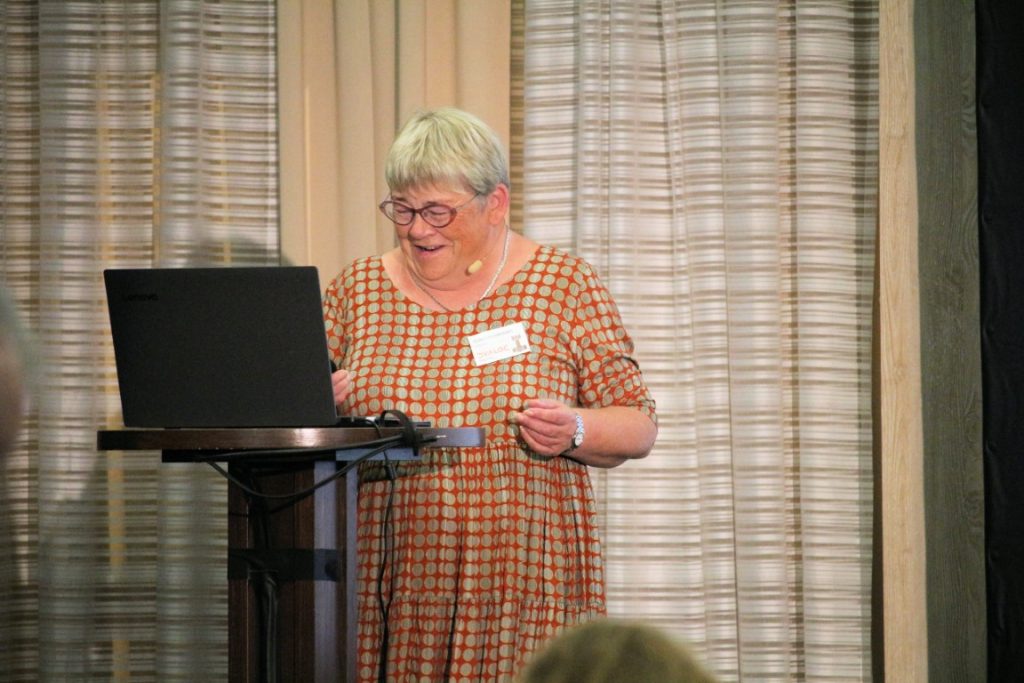
Managing Director Gitte Christensen welcomes us to the user meeting.
In some exciting news, Stine Kromberg announced that Dyalog’s board of directors have approved an APL fund for education and science. She also made a call to action for members of the APL community to present their stories to the wider world.
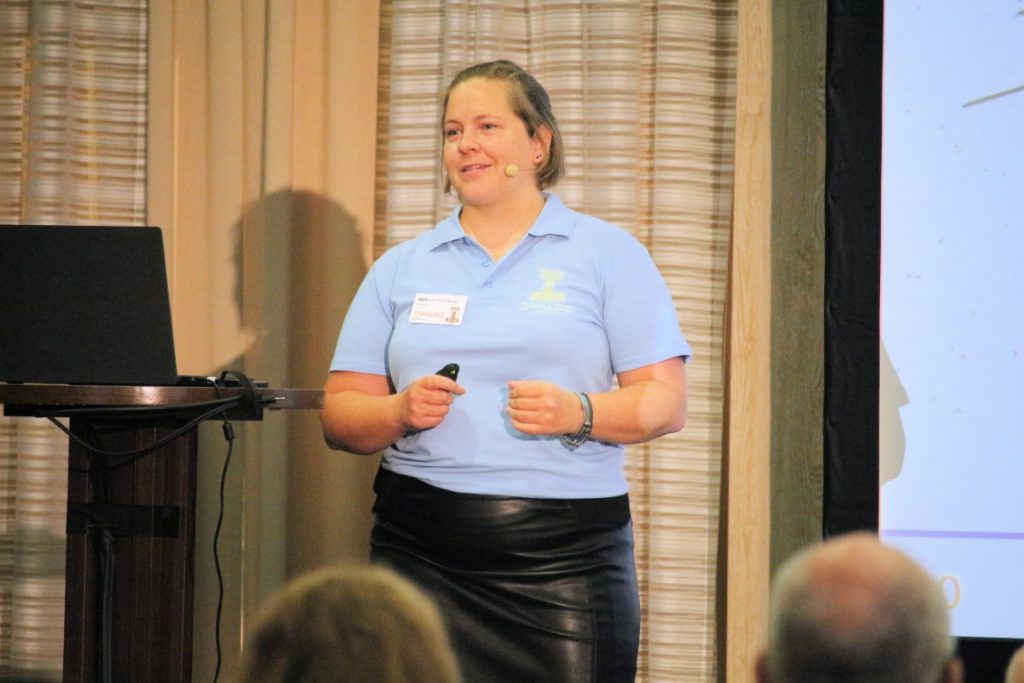
Stine Kromberg announces the APL fund
Morten Kromberg’s road map provided an overview of the multitude of projects and requirements Dyalog is to address in the upcoming years. From the need for new APLers to be recruited to replace those career programmers leaving the fold, to developing tools and training resources that can help all users navigate the modern, complex world of interconnected software development and making the user experience more pleasant and consistent across different platforms.
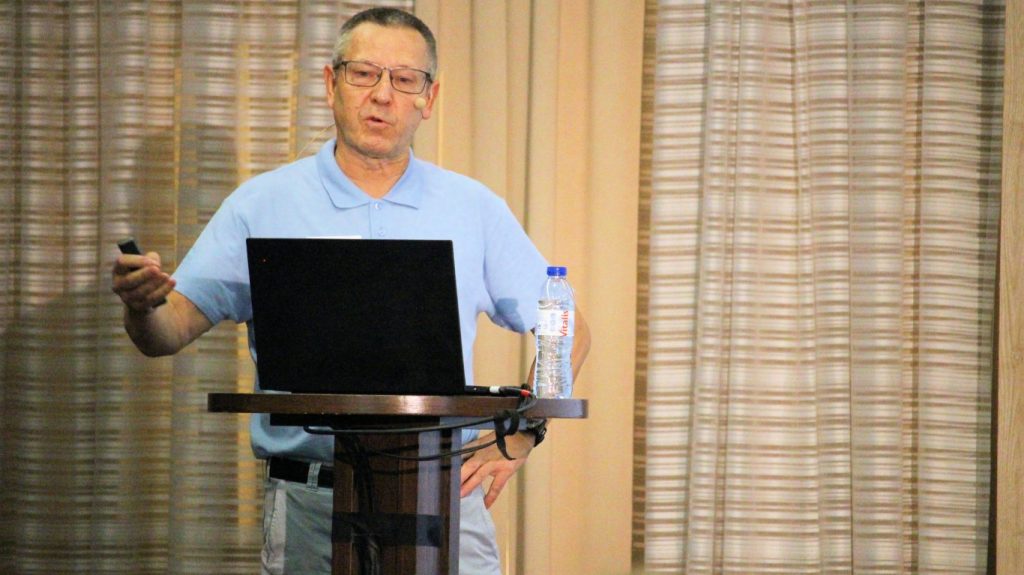
Morten Kromberg presents the roadmap of activity at Dyalog.
Morten later returned to speak about the status of project and package managers for Dyalog. While Carlisle Group’s Dado is an excellent recommendation for those who can adopt its tools and workflow, Dyalog Ltd has employed the help of APLTeam to develop the more agnostic Tatin package manager and Cider project manager, with the hopes of providing a more flexible and extensible set of tools to meet a wider range of needs.
In a double bill of talks from John Daintree, we were shown a special 2022 Conference Edition of the Dyalog interpreter which has features stemming from both internal discussions and projects and our users’ requests and ideas. He reiterated some of the complications of input and output in Dyalog, but showed how the conference edition can more intelligently handle output from the various sources – for example error messages, quad output ⎕←message and output from system commands.
In his second talk, he demonstrated a system for piece-by-piece debugging of inline APL code and functions. We think you will agree that being able to step through the evaluation of a single line of APL has massive implications for teaching, writing and understanding APL.
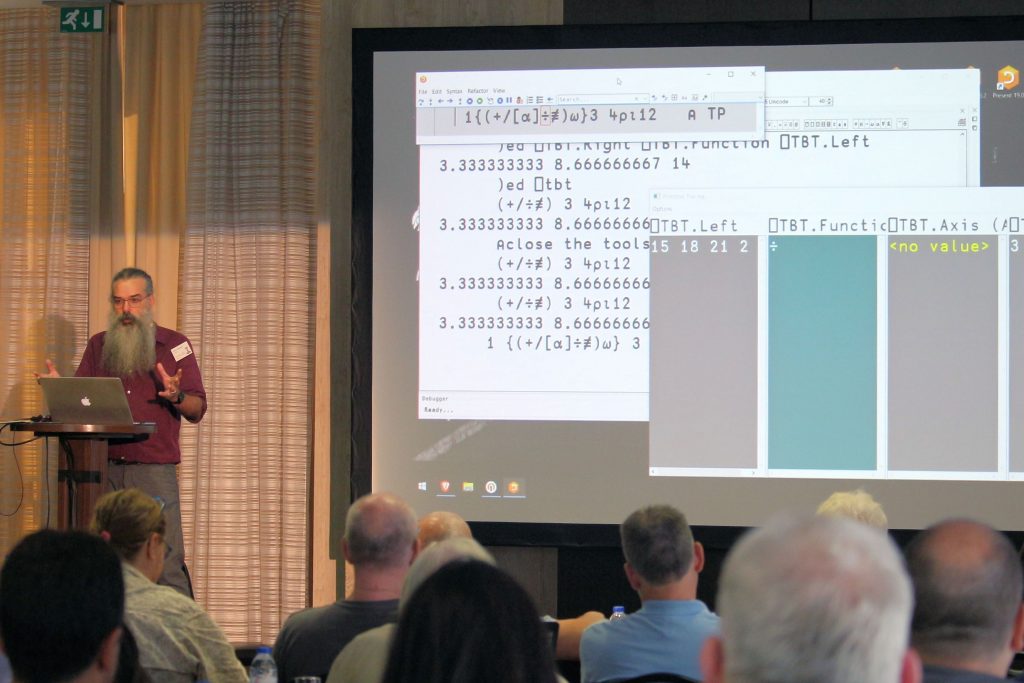
John Daintree demonstrates inline “token by token” debugging.
Charles Brenner from DNA-View took us on a journey of his discovery of a method of performing numerical integrations in high dimensional spaces – using a kind of Riemann summation (analogous to the rectangle or trapezium methods) using simplexes (multidimensional generalisation of triangle and tetrahedrons).
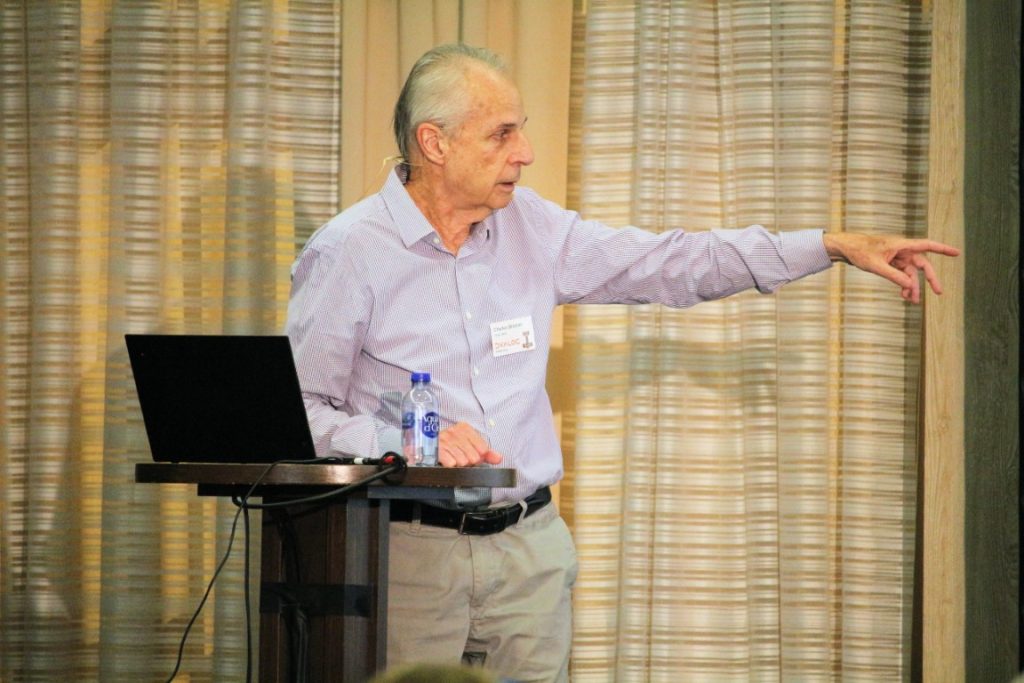
Charles Brenner talks about numerical integration
Gilgamesh Athoraya presented a recent project by Tiamatica AB to migrate a process planning system from mainframe APL2 to Dyalog in the cloud. This large undertaking began with creating a bridge from Dyalog to APL2, and the challenge continues as code must be migrate to Dyalog while being able to fold in updates made by the APL2 team still maintaining the current software.
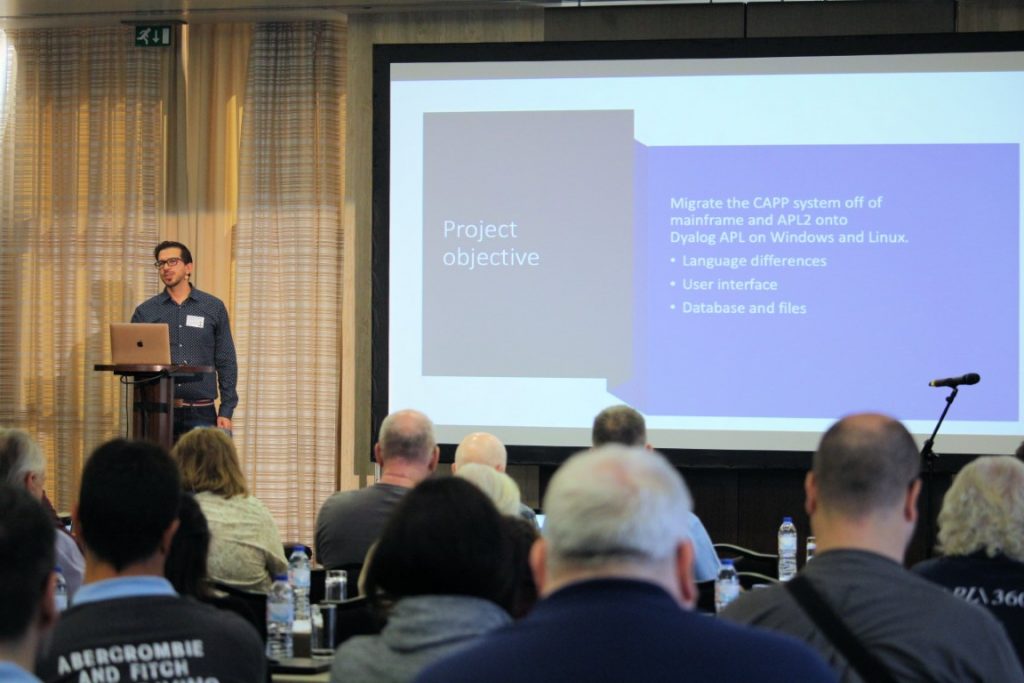
Gilgamesh Athoraya talks about migrating APL2 mainframe to Dyalog in the cloud.
Another APL2 conversion, Mark Wolfson of BIG provided some fascinating insights into the world of Jewelers in North America. Many of these business have managed to resist the trend of becoming parts of large conglomerates and have stayed as small, often family owned businesses. This has meant that they usually don’t have sophisticated software for managing their sales and inventories. Mark’s system uses APL to ingest data from an incredible variety of formats and provide insights to help these businesses thrive.
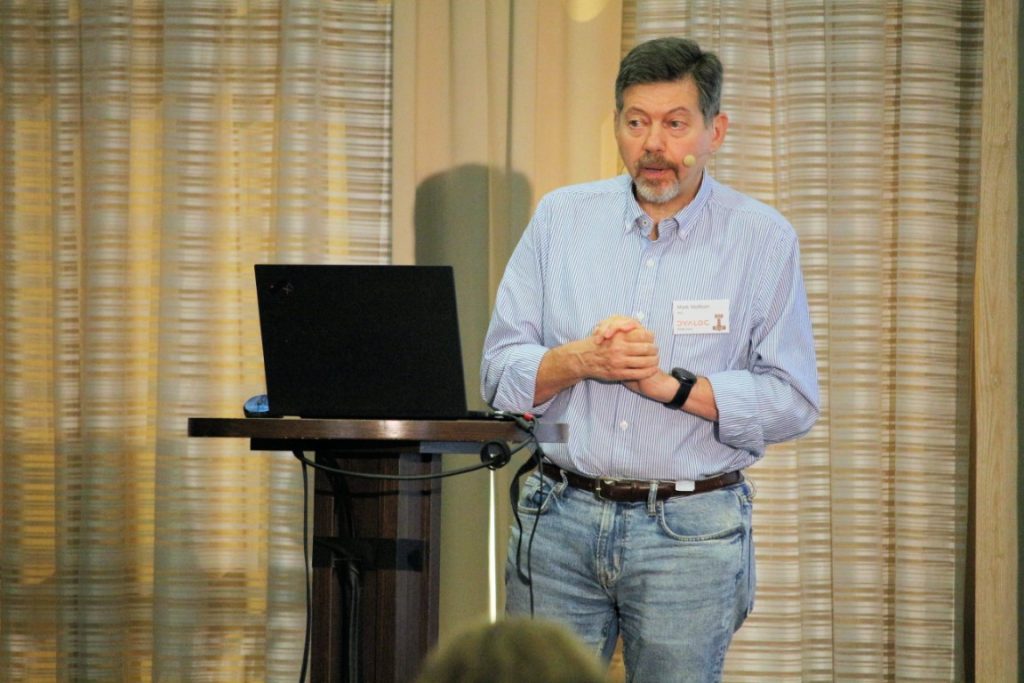
Mark Wolfson gives insight into the world of North American Jewellery retailers.
Unfortunately, Kimmo Linna from Finnair could not join us in person due to his obligations as a pilot. Fortunately for us, his time away from the cockpit during the pandemic led to him developing useful tools and workflows that he was able to show us remotely via video feed. He is using DuckDB to store data and Vega-lite to present it visually, all being driven from Dyalog Jupyter notebooks and connected using bridges that he has published and made available for free on GitHub.
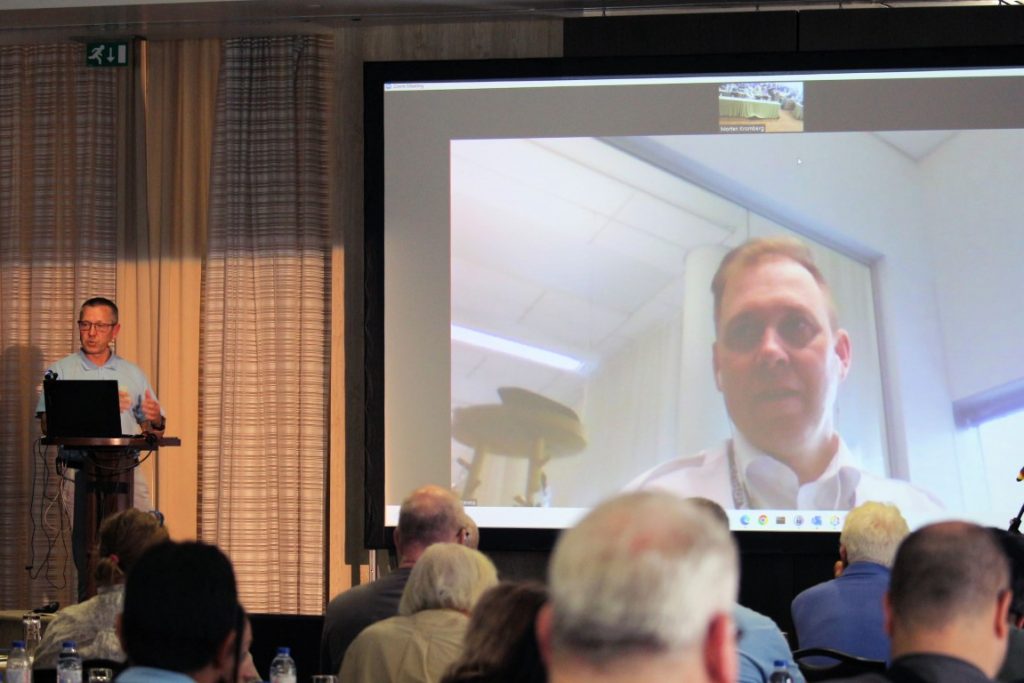
Kimmo Linna presents his Dyalog/DuckDB/Vega-lite/Jupyter workflow
To finish the day, new recruit on the development team Peter Mikkelsen talked about a personal project from before he joined Dyalog: an APL implementation for the Plan9 research operating system. As he explained, it may be lacking performance, documentation and even users, but we could see from his approach and language design choices that he is someone who can bring great ideas to the interpreter development team.
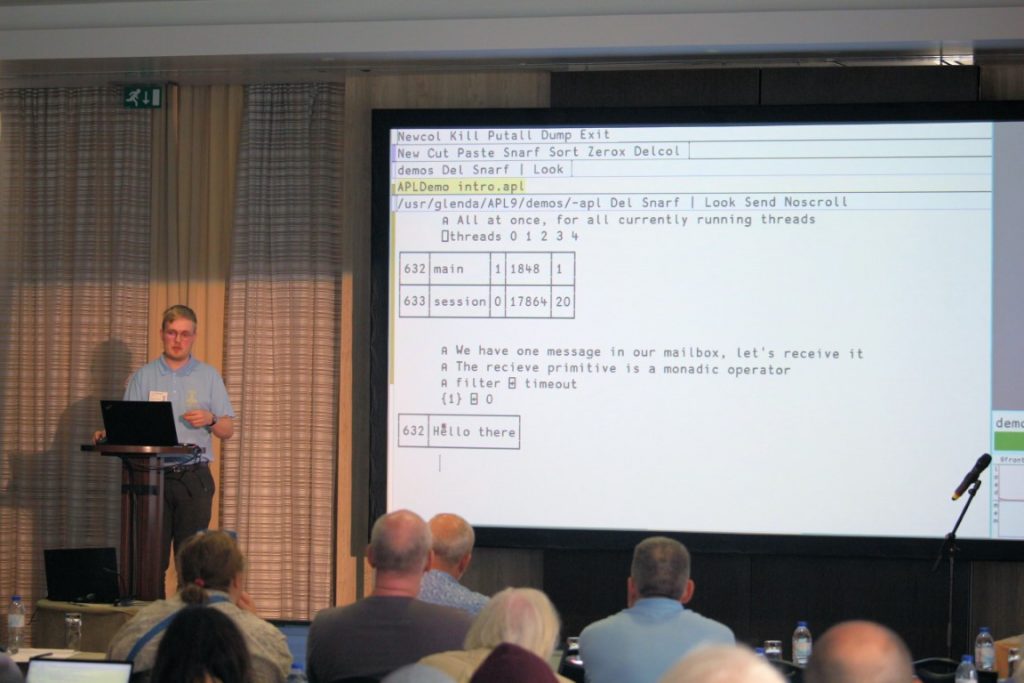
Peter Mikkelsen shows message passing in APL9
Today’s presentations:
- Welcome to Dyalog ’22 – Gitte Christensen and Stine Kromberg
- The Road Ahead – Morten Kromberg
- D03: 2022 Conference Edition Part 1 – Past – John Daintree
- U01: One-Time Pure Mathematician Corrupted by Exposure to APL Loses Moral Compass and Discovers, after Several Mis‑Steps, a Useful Numerical Integration Method – Charles Brenner
- U02: Lift-Off from APL2 Mainframe to Dyalog in the Cloud – Gilgamesh Athoraya
- U03: Rebuilding a Production APL Environment using Dyalog – Mark Wolfson
- D04: 2022 Conference Edition Part 2 – Present – John Daintree
- D05: The P words…Projects and Packages – Morten Kromberg
- U04: A Modern APL Workbench – Kimmo Linna
- U05: An APL to Vega-lite Interface – Kimmo Linna
- D06: APL9 from Outer Space – Peter Mikkelsen


 Follow
Follow